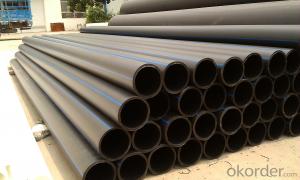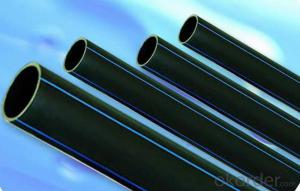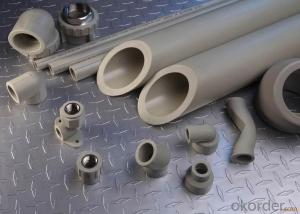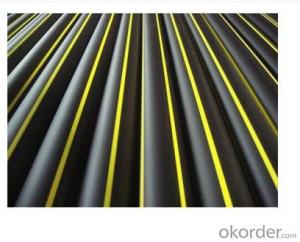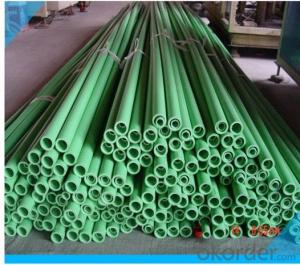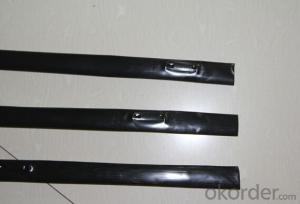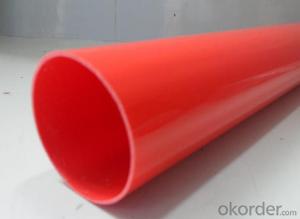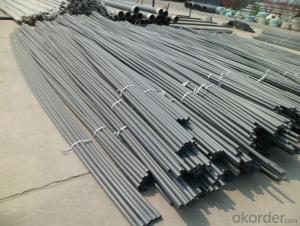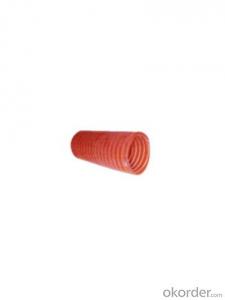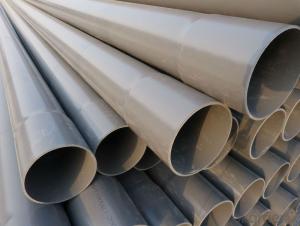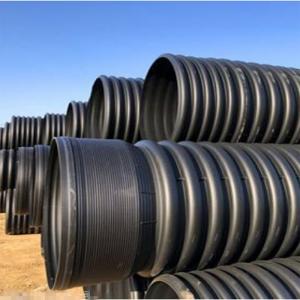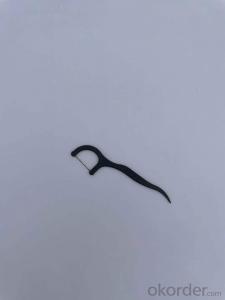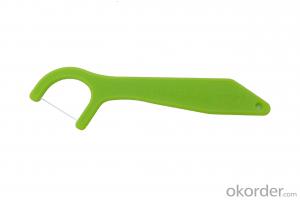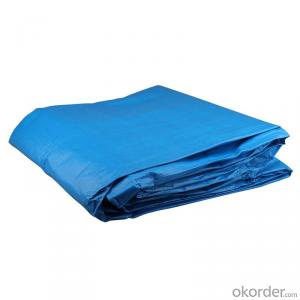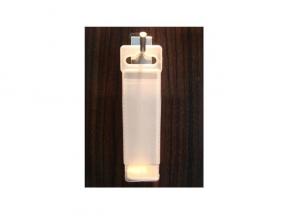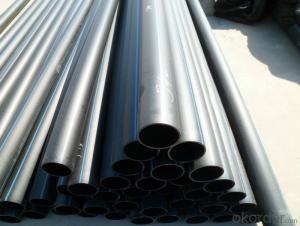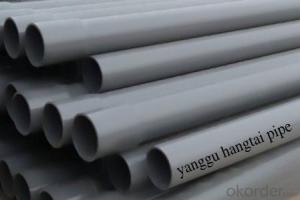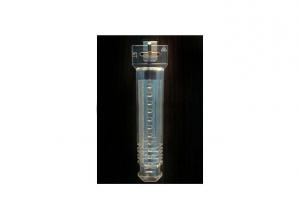HDPE PIPE ISO4427-2000 DN315
- Loading Port:
- China Main Port
- Payment Terms:
- TT OR LC
- Min Order Qty:
- -
- Supply Capability:
- -
OKorder Service Pledge
OKorder Financial Service
You Might Also Like
Physical properties[edit]
Polyethylene is a thermoplasticpolymer consisting of long hydrocarbon chains. Depending on the crystallinity and molecular weight, a melting point and glass transition may or may not be observable. The temperature at which these occur varies strongly with the type of polyethylene. For common commercial grades of medium- and high-density polyethylene the melting point is typically in the range 120 to 180 °C (248 to 356 °F). The melting point for average, commercial, low-density polyethylene is typically 105 to 115 °C (221 to 239 °F).it is transprant.
Chemical properties[edit]
Most LDPE, MDPE and HDPE grades have excellent chemical resistance, meaning that it is not attacked by strong acids or strong bases. It is also resistant to gentle oxidants and reducing agents. Polyethylene burns slowly with a blue flame having a yellow tip and gives off an odour of paraffin. The material continues burning on removal of the flame source and produces a drip.[3] Crystalline samples do not dissolve at room temperature. Polyethylene (other than cross-linked polyethylene) usually can be dissolved at elevated temperatures in aromatic hydrocarbons such as toluene or xylene, or in chlorinated solvents such as trichloroethane or trichlorobenzene.[4]
GB/T13663-2000:
| PE63管材规格 | |||||
| 公称 外径dn,mm | SDR33 | SDR26 | SDR17.6 | SDR13.6 | SDR11 |
| 公称压力 PN,Mpa | |||||
| 0.32 | 0.4 | 0.6 | 0.8 | 1.0 | |
| 公称 壁厚 | 公称 壁厚 | 公称 壁厚 | 公称 壁厚 | 公称 壁厚 | |
| 16 | 2.3 | ||||
| 20 | 2.3 | 2.3 | |||
| 25 | 2.3 | 2.3 | 2.3 | ||
| 32 | 2.3 | 2.4 | 2.9 | ||
| 40 | 2.3 | 2.3 | 3.0 | 3.7 | |
| 50 | 2.3 | 2.9 | 3.7 | 4.6 | |
| 63 | 2.3 | 2.5 | 3.6 | 4.7 | 5.8 |
| 75 | 2.3 | 2.9 | 4.3 | 5.6 | 6.8 |
| 90 | 2.8 | 3.5 | 5.1 | 6.7 | 8.2 |
| 110 | 3.4 | 4.2 | 6.3 | 8.1 | 10.0 |
| 125 | 3.9 | 4.8 | 7.1 | 9.2 | 11.4 |
| 140 | 4.3 | 5.4 | 8.0 | 10.3 | 12.7 |
| 160 | 4.9 | 6.2 | 9.1 | 11.8 | 14.6 |
| 180 | 5.5 | 6.9 | 10.2 | 13.3 | 16.4 |
| 200 | 6.2 | 7.7 | 11.4 | 14.7 | 18.2 |
| 225 | 6.9 | 8.6 | 12.8 | 16.6 | 20.5 |
| 250 | 7.7 | 9.6 | 14.2 | 18.4 | 22.7 |
| 280 | 8.6 | 10.7 | 15.9 | 20.6 | 25.4 |
| 315 | 9.7 | 12.1 | 17.9 | 23.2 | 28.6 |
| 355 | 10.9 | 13.6 | 20.1 | 26.1 | 32.2 |
| 400 | 12.3 | 15.3 | 22.7 | 29.4 | 36.3 |
| 450 | 13.8 | 17.2 | 25.5 | 33.1 | 40.9 |
| 500 | 15.3 | 19.1 | 28.3 | 36.8 | 45.4 |
| 560 | 17.2 | 21.4 | 31.7 | 41.2 | 50.8 |
| 630 | 19.3 | 24.1 | 35.7 | 46.3 | 57.2 |
- Q:What are the different closure options for snap-on tubes?
- The different closure options for snap-on tubes include screw caps, flip-top caps, snap-on caps, and press-on caps.
- Q:Can plastic tubes be easily transported?
- Yes, plastic tubes can be easily transported due to their lightweight and compact design. They are often packaged in rolls or bundles, making them convenient to carry and transport in bulk.
- Q:How do you prevent plastic tubes from warping?
- To prevent plastic tubes from warping, it is important to store them in a cool and dry environment, away from direct sunlight or heat sources. Additionally, avoid placing heavy objects on top of the tubes, as it can cause deformation. Choosing tubes made of high-quality, durable plastic materials and handling them with care during transportation and usage can also help prevent warping.
- Q:Can plastic tubes be used for fire extinguishing systems?
- Yes, plastic tubes can be used for fire extinguishing systems. However, it is important to note that the specific type of plastic used must be fire-resistant and comply with safety regulations. Additionally, proper installation and maintenance are crucial to ensure the effectiveness and reliability of the fire extinguishing system.
- Q:Are plastic tubes resistant to UV degradation?
- Plastic tubes can vary in their resistance to UV degradation depending on the type of plastic used. Some plastics, like PVC and HDPE, have inherent UV resistance and can withstand prolonged exposure to sunlight without significant degradation. However, other plastics, such as polycarbonate or acrylic, may be more susceptible to UV damage and can degrade over time when exposed to UV radiation. Therefore, it is important to consider the specific type of plastic used in the tubes when determining their UV resistance.
- Q:Can plastic tubes be used for storing and transporting hazardous materials?
- No, plastic tubes are not suitable for storing and transporting hazardous materials as they may not provide sufficient protection against leaks, spills, or chemical reactions that can occur with certain substances. It is important to use approved containers specifically designed for hazardous materials to ensure safety and compliance with regulations.
- Q:Regarding NG feeding tubes how difficult is it to take care of someone at home with one? My friend's daughter is coming to stay with me for a little while and her daughter has an eating disorder and is currently being fed with a tube. Her doctor is going to show me how to feed her with it. I was just wondering if this was going to be really complicated or fairly straight forward. Anyone have experience with NG tubes who would like to share their experience using it?
- as long as you don't have to replace it, it is easy.
- Q:One charged plastic ball is vertically above another in a test tube. The balls are in equilibrium a distance d apart. If the charge on each ball is doubled, the distance between the balls in the test tube would become:a. 4db. 2dc. 8d
- Equilibrium is established when the electric force between the balls = weight of upper ball .. this force is constant at any spacing. F = k.q1.q2 / d? .. .. For constant F .. q1.q2 ∝ d? .. .. d ∝ √(q1.q2) When q1 and q2 double .. (q1.q2) increases by a factor of 4 .. and d by a factor √4 = 2 Ans .. ?(b).2d
- Q:I broke off the little plastic part on my oil dipstick in the oil dipstick tube. How can i get it out? My dips?
- If the metal part of the stick isn't within reach, the tube may be removable? Usually you remove the bolt holding the tube, then the only thing holding it should be the o-ring. I'd have to look at it, I can't see much from here.
- Q:how do i safely clean the inside of used fluorescent tubes in order to use them for a different purpose.?
- You don't. The tubes contain mercury (in a VERY minute amount) and should not be opend up for any reason other than disposal, which only recycling firms are allowed to do. There IS another alternative however, and that is the plastic safty cover for them. They are sold at the big box stores, Home Depot and Lowe's, and likely in other places as well. The link shows some *specialty* covers but there are also plain, clear covers for them, though I admit that the colored ones give you a much better idea of what to look for. Al
1. Manufacturer Overview |
|
|---|---|
| Location | |
| Year Established | |
| Annual Output Value | |
| Main Markets | |
| Company Certifications | |
2. Manufacturer Certificates |
|
|---|---|
| a) Certification Name | |
| Range | |
| Reference | |
| Validity Period | |
3. Manufacturer Capability |
|
|---|---|
| a)Trade Capacity | |
| Nearest Port | |
| Export Percentage | |
| No.of Employees in Trade Department | |
| Language Spoken: | |
| b)Factory Information | |
| Factory Size: | |
| No. of Production Lines | |
| Contract Manufacturing | |
| Product Price Range | |
Send your message to us
HDPE PIPE ISO4427-2000 DN315
- Loading Port:
- China Main Port
- Payment Terms:
- TT OR LC
- Min Order Qty:
- -
- Supply Capability:
- -
OKorder Service Pledge
OKorder Financial Service
Similar products
New products
Hot products
Hot Searches
Related keywords
